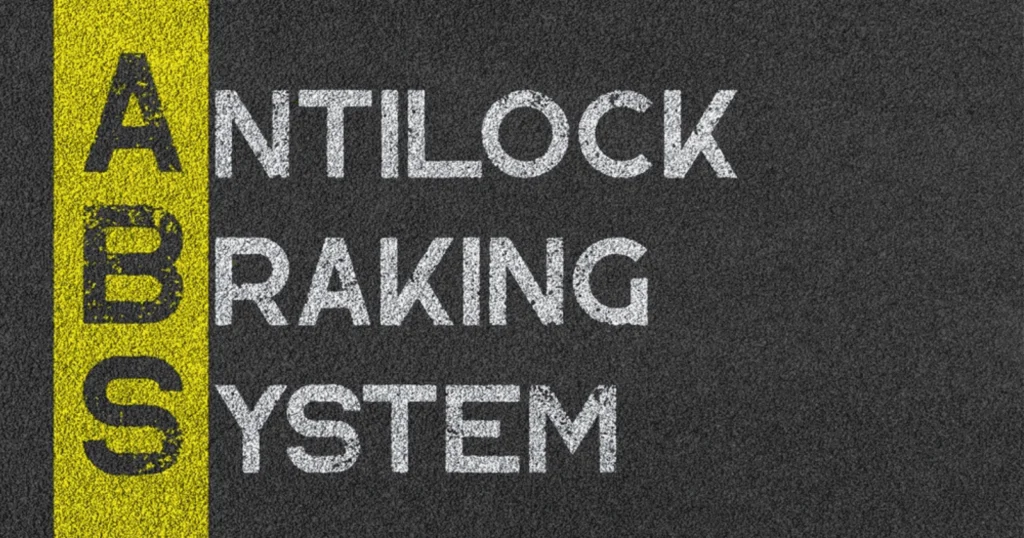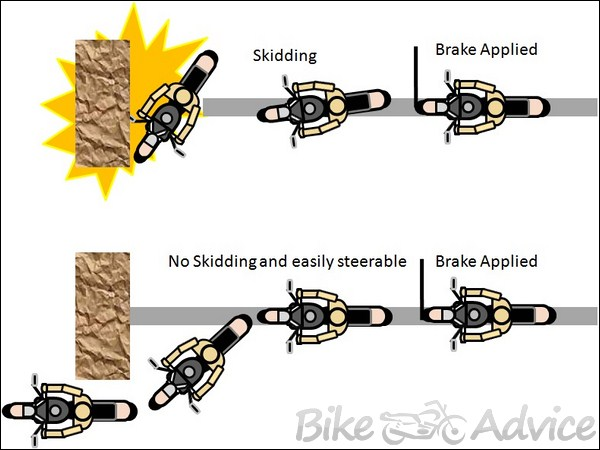When it comes to motorcycles, safety is just as important as speed and style. One of the most crucial safety features introduced in modern bikes is ABS. But what is ABS in bike, and why is it becoming a standard feature even in budget two-wheelers in India?
Let’s break it down in simple terms, explore its working, benefits, and how it compares to ABS in cars and other forms.
What is ABS?

ABS stands for Anti-lock Braking System. It’s an advanced safety feature designed to prevent your vehicle’s wheels from locking up during sudden or hard braking. Locking wheels can cause your bike to skid uncontrollably, especially on wet or slippery roads.
By preventing wheel lock-up, ABS helps maintain traction and control, making braking safer and more predictable.
What is ABS in Bike?
Now, what is ABS in bike specifically? In motorcycles, ABS is a braking system that intelligently manages the brake pressure during emergency braking situations. When you hit the brakes suddenly, ABS kicks in to stop the wheels from locking and helps you maintain control of the bike.

This system is especially useful during:
- Sudden stops at high speeds
- Wet or gravelly roads
- Emergency braking in traffic
In India, ABS has been made mandatory for bikes above 125cc since April 2019, which clearly shows its significance in two-wheeler safety.
Also Read: Which Bike is No. 1 in the World?
How Does ABS Work in a Bike?
Here’s a simplified explanation of how the ABS system in bikes functions:

- Sensors: ABS-equipped bikes have wheel speed sensors on both the front and rear wheels.
- Electronic Control Unit (ECU): This brain constantly monitors the speed of both wheels.
- Hydraulic Valves: If the ECU detects that a wheel is about to lock up, it quickly modulates brake pressure using valves.
- Feedback Loop: This process happens in milliseconds, hundreds of times per second, ensuring maximum braking without losing grip.
As a result, even if you pull the brake lever hard, your wheels won’t skid, and your bike remains steerable.
What is ABS in Car vs. Bike?
A common question is: What is ABS in car and how does it compare to bikes?
ABS works on the same basic principle in both bikes and cars—preventing wheel lock-up. However, its impact and behavior differ due to the design and dynamics of two-wheelers versus four-wheelers.
- In cars, ABS helps in keeping the vehicle in a straight line while allowing you to steer during sudden braking.
- In bikes, ABS does the same, but the risk of losing balance is higher, making ABS even more critical in motorcycles.
Modern cars often come with advanced ABS systems that work in conjunction with Electronic Brakeforce Distribution (EBD) and traction control, while in bikes, the system is generally simpler but just as effective for rider safety.
Types of ABS in Bikes
Depending on the type and segment of motorcycle, ABS systems may vary:
1. Single-Channel ABS
- Works only on the front wheel
- Common in entry-level bikes
- Offers basic protection but not full
2. Dual-Channel ABS
- Controls both front and rear wheels
- Found in most mid- to high-end bikes
- Offers better stability and control
3. Cornering ABS (Premium Bikes)
- Adjusts braking during leaning (turns)
- Found in sports and adventure bikes
- Most advanced and safest option
What is ABS Braking System?
The ABS braking system refers to the entire setup that includes sensors, the ECU, brake calipers, and valves—all working together to provide safer braking.
Benefits of ABS braking system:
- Prevents skidding
- Reduces stopping distance on slippery roads
- Enhances control during panic stops
- Increases rider confidence, especially for beginners
What is ABS Material?
Shifting gears for a moment—people also ask, what is ABS material? This refers to Acrylonitrile Butadiene Styrene, a plastic polymer used in manufacturing.

It’s used in automotive components (including some bike parts), electronics, helmets, and more.
➤ What is ABS plastic?
ABS plastic is:
- Lightweight
- Durable
- Impact-resistant
- Easy to mold and cost-effective
So when you hear “ABS” in the context of materials, it’s not about braking—it’s about a strong plastic used in the bike’s body or other accessories.
Pros and Cons of ABS in Bikes
✅ Pros:
- Prevents wheel lock and skidding
- Makes emergency braking safer
- Helpful for beginner riders
- According to the NHTSA, ABS significantly reduces crash risks during hard braking on slippery roads.
❌ Cons:
- Slightly higher cost of the bike
- Minor increase in maintenance
- May reduce rear-wheel slides in off-road sports (but optional in some models)
Despite the cons, the benefits far outweigh the drawbacks for everyday users.
Real-Life Example: ABS in Action
Let’s say you’re riding at 60 km/h and suddenly a dog runs across the road. Without ABS, if you brake hard, your front wheel could lock, causing the bike to slide and possibly throw you off.

With ABS, the system adjusts braking pressure rapidly, keeping the wheels turning just enough to maintain balance and allow you to steer around the obstacle or stop in a straight line.Organizations like SIAM continue to promote road safety and awareness about the importance of ABS in Indian two-wheelers.
A Brief History of ABS
The concept of ABS (Anti-lock Braking System) dates back to the 1920s, when it was first developed for aircraft to prevent wheel lock during landing. The first practical automotive ABS system was introduced by Dunlop in the 1950s, called the Maxaret system, primarily used in airplanes and racing cars. In the 1970s, car manufacturers like Chrysler and Mercedes-Benz began implementing electronic ABS systems in passenger cars.
ABS for motorcycles came much later due to the challenges of size, weight, and cost. BMW was the first to introduce a production motorcycle with ABS in 1988 (the BMW K100), and since then, the technology has evolved rapidly. Today, ABS is considered a critical safety feature and is mandatory in many countries for motorcycles above certain engine capacities—including India.
🇮🇳 ABS Mandate in India
As per Government of India regulations (2019), all two-wheelers above 125cc must come with ABS:
- All two-wheelers above 125cc must come with ABS
- For bikes below 125cc, CBS (Combined Braking System) is mandated
This has significantly improved road safety and reduced accident fatalities related to skidding or loss of control.
Why ABS is a Must-Have in Bikes
To wrap it up, what is ABS in bike? It’s not just a technical term—it’s a life-saving feature that can make the difference between a safe stop and a serious accident.
Whether you’re a daily commuter, weekend rider, or beginner biker, having ABS in your bike adds a vital layer of safety. In fact, many riders who’ve experienced both ABS and non-ABS models vouch for the confidence and peace of mind it brings.
✅ FAQs
Q: What is ABS in cars?
A: It’s the same anti-lock braking system that prevents wheels from locking during braking, helping maintain steering control in vehicles.
Q: Can ABS be installed later on a bike?
A: Technically possible, but it’s expensive and not recommended unless done by certified professionals.
Q: Does ABS reduce braking power?
A: No, it improves braking efficiency by maintaining traction and preventing skids.











